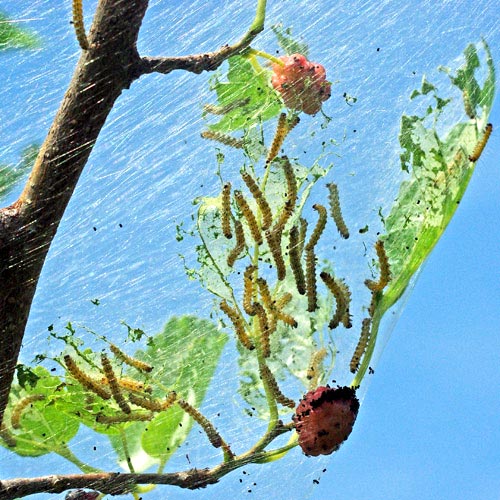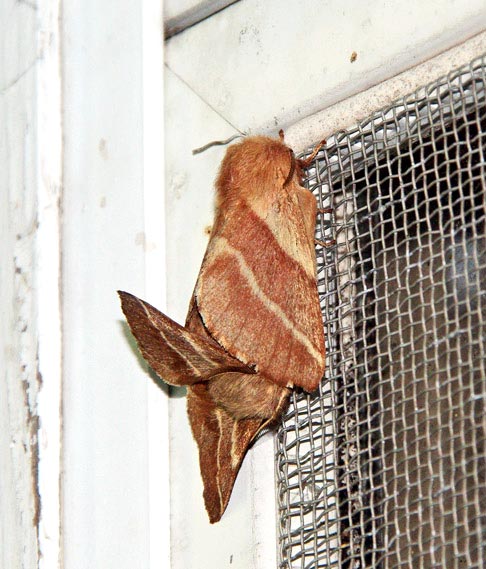Greetings, BugFans,
Larvae of the Eastern Tent caterpillar (Malacosoma americanum) emerge by the hundreds from egg cases that encircle the twigs of their food trees—members of the Rose family like apple, cherry and hawthorn. They spin communal, webby enclosures in the forks of branches in late spring and summer. In the continuum of web-spinning caterpillars, tent caterpillars are often confused with fall webworms. Tent caterpillars are prominent in late spring and early summer; webworms in fall.
[metaslider id=3584]
Eastern Tent Caterpillar
The webs of the tent caterpillar are their dwellings; they leave to feed and return for shelter. Oddly, the closely-related Forest Tent Caterpillar (M. disstria) (not pictured) moves about and feeds and roosts in crowds of 100 or more, but although they guide themselves from roost (the trunks) to pantry (the leaves of sugar maple, ash, basswood, and aspen, among others) and back with pheromone-laced web trails, they are “tent-less” tent caterpillars.
About a week after hatching, the fuzzy gang of tent caterpillars gets together and starts spinning. The shelter that they weave is made of layers of tough silk, spun in great sheets with multiple “doors.” The caterpillars spin (in mid-morning and early evening) and shed (five times) and eat (often at night, and they spin web-trails so they can get back home. According to Donald Stokes in A Guide to Observing Insect Lives, the web trails, which can be observed on twigs, communicate via pheromones the excellence of the cuisine, and a “five-star rated” trail gets the most traffic. They eat non-rose species after they have defoliated their preferred hosts.
If you look closely at a web, you can see frass (bugspeak for poop) and accordion-like shed skins inside. As the caterpillars grow and the old layer gets crowded and littered with skins and frass, a new, roomier layer is added above the old. The web is a like a greenhouse—storing warmth and humidity (although a very warm day may drive its sweaty inhabitants outside) and it provides some protection from predators.
After their fifth molt, the caterpillars leave their web (sometimes simply by holding their noses and jackknifing off the twigs) and pupate for about three weeks in a sheltered spot in a cocoon described in several references as imbued with a whitish powder and “flocculent,” (the BugLady’s favorite word from high school chemistry). The web starts to deteriorate after the larvae bail. The unspectacular brown moths they metamorphose into produce more egg mass in late summer, and so it goes. The adults do not feed.
Lepidopterists have an adage that “the homelier the caterpillar, the more spectacular the adult,” but the BugLady gives both the larva and adult tent caterpillar a “5.” Barely.
The Bug Lady

